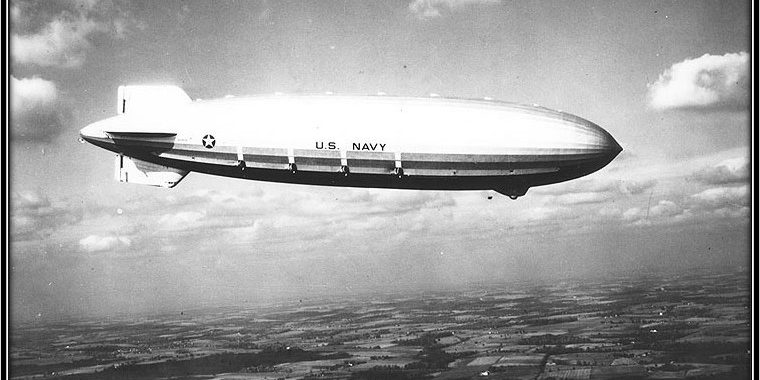This Day in Aviation: April 4th, 1933
Contributor: Barry Fetzer
Sources: History.com
Balloons are fun! Even the big ones…the gargantuan ones. Even their names are fun. Dirigible. Airship. Zeppelin. Blimp.
Seeing one of these gigantic machines lazily (apparently lazily…but not really…as there’s much work in designing, building, and flying them) floating by. And while their names are fun and they may appear to be fun, like all balloons are, there’s nothing “fun” about their flying record whether you’re talking about German or British zeppelins or American dirigibles or airships.
Here’s just one of many examples. According to History.com, “On April 4, 1933, a dirigible” (this one better described as an “airship”) “crashed in New Jersey, killing 73 men in one of the first air disasters in history. The Akron was the largest airship built in the United States when it took its first flight in August 1931. In its short life of less than two years, it was involved in two fatal accidents.

The maiden voyage of the USS Akron on 2 November 1931, showing her four starboard propellers. The engines’ water reclaiming devices appear as white strips above each propeller. The emergency rear control cabin is visible in the lower fin. Public domain.

Why the USS Akron is better defined as an Airship.
F9C Sparrowhawk in Akron’s hangar. This aircraft was one of four lost with USS Macon on 12 February 1935. Courtesy Wikipedia.
In 1932, the Akron made a flight from New Jersey to the Camp Kearny military base, near San Diego, California. It attempted to land in high winds, with three groups of 30 men each assigned to help pull in the airship and secure it to the ground with ropes. But the Akron, which was filled with helium, began to rise again after the sailors had begun to secure it. Three men held on to their ropes as the Akron rose into the air; two of the three fell from 200 feet and were killed. The third man, Bud Cowart, managed to hold on at the end of the rope for two hours as the Akron dragged him 2,000 feet above the ground. Finally, the crew managed to pull him up into the airship through a porthole.
The crew then made its second mistake: the dirigible’s water ballast was dumped in order to make the flying ship rise. However, the ballast dump thrust the Akron up too far, too fast. Critical devices and cables were destroyed and all control was lost. The Akron plunged into the ocean.
The rescue airship J-3 was sent to help the Akron crew. It also crashed in the storm, killing two of the seven crew members on board. Only three of the Akron‘s 76 crew members survived the disaster. One of the survivors was the commander who had ordered the fateful ballast dump.
This was the deadliest air disaster since the crash of the first rigid airship built in the United States, the Shenandoah, which killed 14 people on September 3, 1925.







